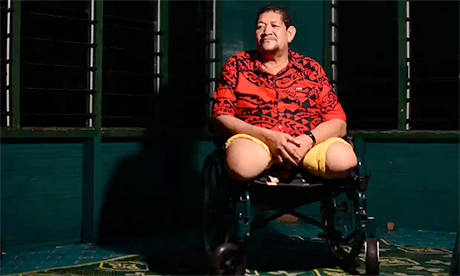At the height of his 15-year career as a surgeon in the Pacific nation of Fiji, Dr Jone Hawea was performing eight to 10 diabetes-related operations every day – at least two of which were the amputations of limbs.
“Our wards are always full of diabetes cases. Sometimes our surgical wards wouldn’t be able to deal with the non-emergency cases because there’s all this diabetes surgery to do,” says Hawea.
Hawea, a leading non-communicable disease specialist in Fiji, says these figures would be common in major hospitals around the country, which has one of the highest rates of type 2 diabetes in the world.
Surgeons in the Pacific nation describe the amputations they are forced to perform as a “dirty business”.
“It became so common and so unattractive I started not feeling anything about the work. I guess that’s when I started to have a problem with this way of dealing with diabetes.”
While in many countries, diabetes is detected early and can be managed through diet, exercise and medication, in Fiji, the disease is often not caught until amputation, or even death, are imminent.
‘I ate everything and drank everything.’
For Wilisoni Lagi Vuatalevu, this was the reality. Within a month of retiring at 55 years old from his clerical job, Vuatalevu was facing the amputation of one of his legs.
He should have been able to retire to his village where days are spent fishing and foraging for food from organic sources. Most Fijians start and end their active lives this way.
Instead, two years after finishing work, Wilisoni faces the prospect of sitting out the rest of his life in a wheelchair in his home at Delainavesi just outside the capital city, Suva.
“Two years before I retired, I noted a boil on my leg that wouldn’t heal. When I had it checked out at the health centre, they did tests but didn’t say it was diabetes. They said my blood sugar was fine.”
Wilisoni admits he was not too motivated to investigate the wound further and soldiered on for more than a year with the wound. One month after he retired, the pain was unbearable and bled profusely.
“When they checked, the doctor was very kind and pleasant as she told me it was clearly ‘that sugar disease’ and told me I’d lose that leg… I was frightened,” Wilisoni said.
After an emotional conversation with wife Kelera during which they imagined and planned for a future without a leg, he reluctantly agreed to the surgery.
“We have been looking after each other all our marriage, why should this be different? I told him, I will look after you even if you lose both legs,” Kelera said.
Like most indigenous Fijians, Vuatalevu’s life story began in an idyllic island village – on Vanuabalavu in the Lau Group, the province bordering Fiji and Tonga. It is far from Suva and far also from processed foods, savoury treats and sugary delights which many Pacific Islanders have turned to in place of their usual diet.
“I was never fat, I’m quite tall so I’ve always had a good body when I was growing up,” Vuatalevu said.
“But I ate everything and drank everything, I didn’t really choose food that was good for me or even thought about what was good for me and what wasn’t. I didn’t have to. Whatever was available and came my way, I ate. It was the same with alcohol.”
A call for change
Vuatalevu is far from alone. According to the Fiji government’s department of health, 30% of the country’s population has diabetes.
And the Pacific, more broadly, is devastatingly over-represented in its proportion of people with the disease. Ten Pacific countries are in the top 20 countries for rates of diabetes, led by the Marshall Islands, Kiribati, and Tuvalu.
The International Diabetes Federation says around 87,000 adult Fijians have diabetes – about 15% of the population – but estimates another 46,000 have the disease undiagnosed.
Diabetes-related amputations accounted for 40% of all hospital operations in the country in 2019, the professor of surgery at Fiji’s National University told RNZ.
The top three causes of deaths in Fiji are diabetes, heart disease and stroke. Continue reading
Additional readingNews category: Analysis and Comment.




